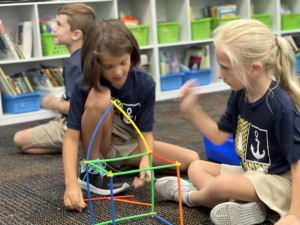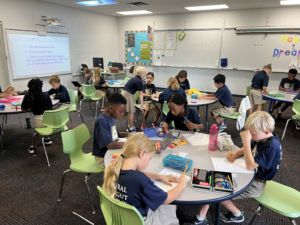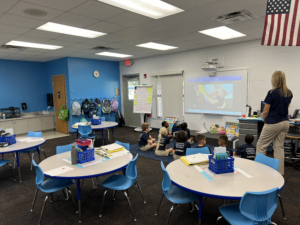Incorporating Art into the STEM Curriculum
Presently, there is a movement to incorporate more art thought “creativity and innovation” into the STEM curriculum. The acronym for this infusion of the “Arts” into the curriculum is STEAM.
Not only are the visual arts a component of this shift, but also classes such as drama, film and animation, music, and photography.
Written By: Robert Gibbons, Curriculum Director at Admiral Farragut Academy
One could argue that there has always been the creative side to design and creation in the STEM curriculum. I can remember back to my high school days when I took a drafting and design class. Bringing a concept I had in my mind to life on paper was the challenge of this course. In fact, I grew up in a General Motors town in Indiana in the 60’s and one of my most memorable experiences was participating in a competition to design futuristic cars.
Emphasizing creativity and ingenuity into the core of STEM reinforces the concept that all learning is interrelated. The 21st century skills of communication, collaboration, creativity and critical thinking are not exclusive to one discipline but are essential for our students to be able to solve problems and to be successful in any profession. Students today will need to compete in an ever-increasing global workforce. There are many ways we infuse the arts into our curriculum, for example projects include; the design and building of a robot, volcano eruption model, creating a Viking shield, and model airplanes. It is importnat o strengthen the curriculum in all STEM subjects and to lead the way in the STEM + Arts = STEAM area. To find out more about this initiative visit www.stemtosteam.org.
Below are examples of the creative, hands-on, project-based learning that is being integrated throughout the curriculum at Admiral Farragut Academy.
Elementary School STEAM Examples
Students designed their own eruptive volcano, representation of the solar system, and created a model membrane using household materials like tin foil.
Elementary Volcano
Middle School STEAM Examples
Students created a Flashy Fish for a marine science class contest, designed, built and tested a bridge for a project in their STEM class, and teamed up to construct an underwater ROV that they tested in the pool. In addition, the middle school used the 3D Autodesk software to design their own Viking shield for a unit they were studying in geography class.
PLTW in middle school
High School STEAM Examples
Our Aviation program uses a variety of projects including building and personalizing model airplanes. The Robotics Club has used the free 3D Sketch Up program to design several projects over the last three years. Projects the members have worked on include a model of the Huntley Field House’s obstacle course and a remodeled version of the Russell Building. Club members are currently redesigning the library area. In addition, the Robotics Club designed its own robot to the objectives of the First Tech Challenge. Students in the Project Lead The Way classes are constantly creating and designing projects using the 3D software. Working together to design a functional project and solve problems is the cornerstone to this kind of project-based learning.
Model Airplanes








